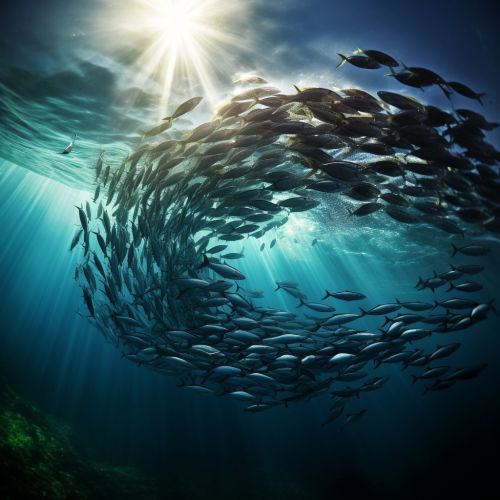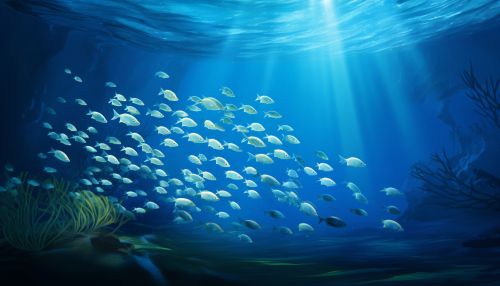Fish Migration
Introduction
Fish migration refers to the regular, often seasonal, movement of fish species from one habitat to another for specific purposes such as spawning or feeding. This phenomenon is a crucial aspect of the life cycle of many fish species and is often influenced by environmental factors such as temperature, salinity, and food availability.


Types of Fish Migration
There are several types of fish migration, each with unique characteristics and purposes. These include diadromous, potamodromous, oceanodromous, and anadromous migrations.
Diadromous Migration
Diadromous migration involves movement between freshwater and marine environments. Fish species that exhibit this type of migration are classified into three categories: anadromous, catadromous, and amphidromous.
Anadromous Migration
In anadromous migration, fish species are born in freshwater, migrate to the ocean to grow and mature, and then return to freshwater to spawn. Examples of anadromous fish include salmon, shad, and sturgeon.
Catadromous Migration
Catadromous migration is the opposite of anadromous migration. Fish born in marine environments migrate to freshwater to grow and mature, then return to the ocean to spawn. The European eel is an example of a catadromous fish.
Amphidromous Migration
In amphidromous migration, fish migrate between freshwater and marine environments, but not for the purpose of spawning. Instead, these migrations are usually driven by changes in food availability or environmental conditions.
Potamodromous Migration
Potamodromous migration involves movement within freshwater environments. Fish species that exhibit this type of migration often move between different habitats within a river system, such as from a river to a lake or from a tributary to a main river channel.
Oceanodromous Migration
Oceanodromous migration involves movement within marine environments. Fish species that exhibit this type of migration often move between different habitats within an ocean basin, such as from coastal areas to open ocean or from surface waters to deeper waters.
Factors Influencing Fish Migration
Several factors influence the timing and direction of fish migration. These include environmental cues, physiological changes, and genetic factors.
Environmental Cues
Environmental cues such as changes in temperature, day length, and food availability often trigger fish migration. For example, many fish species migrate to warmer waters during the winter to avoid cold temperatures.
Physiological Changes
Physiological changes in fish, such as the development of reproductive organs, can also trigger migration. For example, salmon undergo significant physiological changes before they migrate upstream to spawn.
Genetic Factors
Genetic factors also play a role in fish migration. Some fish species have a strong genetic predisposition to migrate, while others do not. This is often the result of evolutionary adaptations to specific environmental conditions.
Impacts of Fish Migration
Fish migration has significant impacts on ecosystems and human societies. These impacts can be both positive and negative.
Ecosystem Impacts
Fish migration can have significant impacts on ecosystems. Migrating fish often serve as important prey for other animals, and their movement can help distribute nutrients throughout an ecosystem.
Human Impacts
Fish migration also has significant impacts on human societies. Many communities rely on migrating fish for food and income. However, human activities such as dam construction and overfishing can disrupt fish migration patterns and threaten fish populations.
Conservation and Management of Fish Migration
Conservation and management of fish migration is crucial for maintaining healthy fish populations and ecosystems. This involves protecting migration routes, managing fishing activities, and monitoring fish populations.
Protecting Migration Routes
Protecting migration routes is crucial for ensuring that fish can successfully complete their migrations. This often involves removing barriers such as dams or creating fish passages to allow fish to bypass these barriers.
Managing Fishing Activities
Managing fishing activities is also important for conserving migrating fish. This can involve implementing fishing regulations, such as catch limits and closed seasons, to prevent overfishing.
Monitoring Fish Populations
Monitoring fish populations is crucial for assessing the health of fish stocks and the effectiveness of conservation measures. This often involves tracking fish movements and conducting population surveys.
